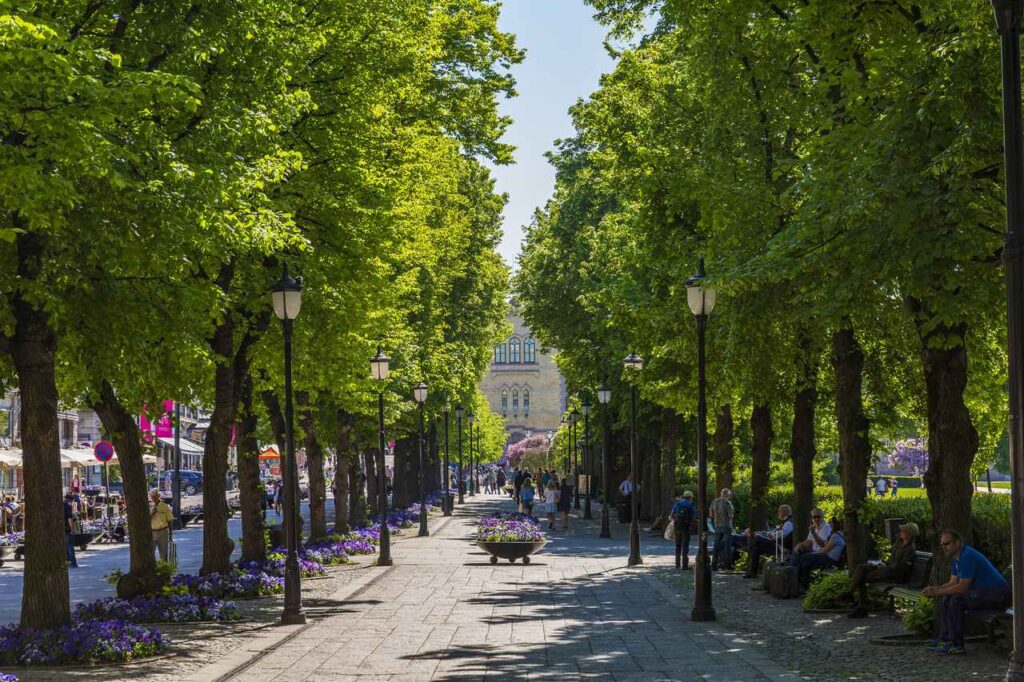
Where the calm blue waters of the Oslofjord meet the rising glass and steel of a modern skyline, Oslo stands as a city perfectly poised between nature and the future. Norway’s capital, once a quiet maritime hub, has transformed into a beacon of sustainable design, innovation, and cultural sophistication — all while keeping its deep connection to nature intact. Oslo today is not just evolving; it’s redefining what it means to be a 21st-century city.
A City in Transformation
Oslo’s story begins over a millennium ago, as a modest Viking settlement along the fjord. For centuries, it remained a small trading and administrative center, shaped by the rhythms of the sea. But in the past few decades, the city has undergone a breathtaking transformation — one rooted in vision, creativity, and care for its surroundings.
The change is most visible along the revitalized waterfront. The Oslo Opera House, with its glacier-like roof sloping into the water, invites visitors to walk across its marble surface — a powerful symbol of accessibility and openness. Nearby, the Barcode Project stretches like a futuristic skyline, its sleek glass towers framing the harbor with precision and modern flair. Across the bay, the Munch Museum and Deichman Library stand as new cultural icons, marrying bold architecture with community-centered design. These projects reflect Oslo’s unique blend of function, beauty, and environmental consciousness — a model of urban renewal that respects both history and humanity.
The Green Blueprint
Sustainability isn’t an afterthought in Oslo; it’s the foundation of everything the city builds. Named the European Green Capital in 2019, Oslo has positioned itself at the forefront of global environmental leadership. More than 70% of new cars sold here are electric, and the city’s public transport system runs primarily on renewable energy. Entire districts, like the Bjørvika waterfront, are designed around eco-friendly principles — featuring zero-emission buildings, green roofs, and spaces that prioritize pedestrians and cyclists over cars.
Beyond infrastructure, Oslo’s environmental ethos is cultural. Recycling, energy efficiency, and respect for the environment are deeply woven into daily life. The city’s ambitious goal of achieving carbon neutrality by 2030 is not just a government target — it’s a shared civic mission. In Oslo, the green movement isn’t a trend; it’s a way of life.
Innovation and Technology: Building Tomorrow
Oslo’s forward-looking spirit extends beyond sustainability into innovation and technology. The city has become a hub for startups focused on green tech, renewable energy, and smart design. Supported by research institutions and universities, Oslo’s innovation ecosystem thrives on collaboration and creativity. From smart traffic systems to digital city planning, technology here serves people, not the other way around.
Unlike many modern cities that equate progress with speed, Oslo’s approach is thoughtful. Its “smart city” initiatives focus on improving quality of life — reducing noise, managing energy, and encouraging community connection through digital solutions. This balance between technological progress and human well-being is what sets Oslo apart in the global conversation about the cities of the future.
Culture and Community in Harmony
While innovation drives Oslo forward, culture keeps it grounded. The city’s artistic pulse beats through its museums, music venues, and public spaces. The National Museum and the Munch Museum celebrate Norway’s creative legacy, while modern districts like Grünerløkka buzz with contemporary art galleries, cafés, and design studios.
Cultural festivals — from the Øya Festival to the Oslo Jazz Festival — fill the city with energy and diversity. Food culture, too, has blossomed into a reflection of sustainability and creativity, with chefs reimagining Nordic cuisine through locally sourced ingredients and minimal waste. Oslo’s multicultural population, now representing more than 150 nationalities, adds a global flavor to this local authenticity.
Nature at the Core
Despite its modern skyline, Oslo never strays far from its natural heart. The city is embraced by forests, lakes, and the glimmering fjord — a setting that shapes daily life. Residents live by the Norwegian philosophy of friluftsliv, or “open-air living,” which celebrates outdoor activity and a deep respect for nature.
On any given day, people can be seen skiing through Oslomarka’s wooded trails in winter, kayaking across the fjord in summer, or enjoying peaceful walks along the harbor year-round. Here, nature isn’t an escape from urban life — it’s an integral part of it.
You’ll Also Like: Honeymoon Adventures: Exploring the Maldives Beyond the Beach
Conclusion
Oslo stands today as a living example of how a city can honor its past while embracing the future. Its sustainable architecture, innovative technologies, and cultural vitality form a harmonious vision of progress that other cities around the world aspire to achieve.
Where fjord waters meet the cutting edge of design and environmental thought, Oslo shines as Norway’s capital of the future — a place where nature, people, and technology coexist in beautiful balance.
